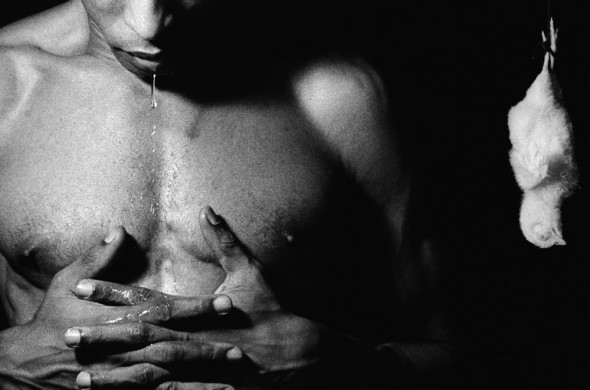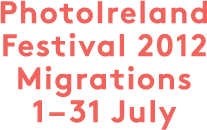
Our assessment of Cuban photography is still strongly predisposed by Korda’s iconic Che Guevara portraits and influences from the great achievements of Epic Photography. Today, Cuban photography and video art strongly interact with international movements and are systematically shown in exhibitions around the globe. Many of these contemporary artists reflect a profoundly Cuban culture, as a subject, in their works. The Afro Cuban aesthetics have been prominently discussed theoretically and have become widely known in installations, performance art, painting and sculpture. They represent a visual dissemination stemming from strong roots firmly planted, which originated from African cults that were imported by slaves hundreds of years ago, resulting in a syncretism of religious expression.
This first show, focused on the relationship between syncretistic religions and contemporary photography, had a great impact in its first venue, the Fototeca de Cuba (Havana’s National Museum of Photography) in 2003. For political and historic reasons, the part of Cuban photographic production that was unrelated to the social reality of the Revolution did not find any interest at the time and for many years after. Historically, documentary and religious photography were lacking public acceptance and were not promoted by the art institutions. Also, the formal aperture of Cuban photography towards more “conceptual” tendencies did not happen before the 1980s, only then allowing the development of new approaches to the religious theme.
Contemporary Cuban photographers engage with the Afro-Cuban traditions from a range of perspectives. One end of that spectrum is defined by documentary photography, such as the work of Jorge Luis Álvarez Pupo, Raúl Cañibano, Elio Delgado, Humberto Mayol, and Ramón Pacheco. The other is marked by a conceptual approach to the African heritage (Pedro Abascal, Ricardo Elías and Liudmila y Nelson). Marta María Pérez Bravo and René Peña inscribe the symbols of an authentic Afro-Cuban language into their self-portraits, while Kattia García investigates the role models of the female in the Santería. Juan Carlos Alóm never draws on any specific ritual practices; however, his visual vocabulary shows a spiritual connection to the legacy of the African Diaspora. Most of the works, of this exhibition, were still hand-printed in black and white, however Sandra Ramos was one of the first Cuban artists to use digital photography, which she used to capture the pilgrimage to the church of San Lázaro.
This collection strives to highlight the individual artists’ profound interpretation of the collective spiritual memory of a nation that has been called “Latin-African” by its Comandante en Jefe, Fidel Castro. Historical and artistic cross-references (e.g. to Ana Mendieta’s oeuvre and contemporary photography from other Latin-American countries) illustrate the complex interference between Cuban photography and the religious subject matter.
The extraordinary iconography of the syncretistic religions and their relation to the heritage of the African Diaspora invite a careful look at these artists in order to uncover new insights into “ El otro lado del alma”, the other side of the soul.
Info
Opening day: 6pm Thu 5 Jul
Dates: 6 Jul-30 Aug
Opening hours:
Mon-Thu: 2-7pm
Fri: 10am-2pm
Closed Sat, Sun and Public Holidays
Guided tours every Tuesday at 5.30pm

Instituto Cervantes Dublin
Exhibition Room
Lincoln House, Lincoln Place, Dublin 2
View PhotoIreland Festival 2011 in a larger map







